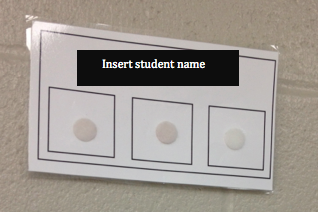Teachers
strive to keep routine, organization and structured time in their classrooms.
All of these are extremely important for students on the Autism Spectrum. One
way to accomplish this is to incorporate workstations into students’ daily
routines. Workstations are easy to make, can be individualized for students to
meet Individualized Educational Program (IEP) objectives, and help to keep a
classroom running smoothly.
As a new teacher in a community class, the majority of my summer paychecks went towards creating my Table Time station. It currently stores over 40 different academic, fine motor and vocational work tasks and is used by my students who are both higher functioning and lower functioning. It rocks my world… and yes, I’m bragging a bit. I've been loving watching my students grow and master Table Time!
What are Structured Work Systems?
Structured work systems were developed by Division TEACCH at UNC Chapel Hill as part of the structured teaching programmatic approach to working with individuals with ASD. A structured work system, sometimes called an independent work systems or work systems, is a set up of work to be done within a visually cued system that answers four questions:
1. What work needs to be done?
In my classroom, we call this station “Table Time.” Take a look at the set up below.
The purpose of table time:
There are MANY reasons why Table Time is SO ESSENTIAL in my classroom:
Students take their individual table time schedule with 3 separate boxes on it (one box for each task).
Each task is represented by a symbol (alphabet A-Z, number 1-10 or basic shape), and is Velcroed to the schedule.
What’s in a task bin?
The number of bins and the amount of work in the bins can change dependent upon the amount of work the student can do independently. The level of difficulty can be increased by increasing the amount of work or the number of tasks.
Below are some examples of some of my tasks.
Label coloured clothing: Match label of colored clothing to clothing picture. Great for students with emerging sight word comprehension.
Put together nuts, bolts, and washers: Durable and age appropriate fine motor tasks that can be put together and taken apart! Self re-setting! My boys love it.
Match socks: Match and fold socks in household based activity. Make easier by using all of the same types of socks or more difficult by using similar socks.
As a new teacher in a community class, the majority of my summer paychecks went towards creating my Table Time station. It currently stores over 40 different academic, fine motor and vocational work tasks and is used by my students who are both higher functioning and lower functioning. It rocks my world… and yes, I’m bragging a bit. I've been loving watching my students grow and master Table Time!
What are Structured Work Systems?
Structured work systems were developed by Division TEACCH at UNC Chapel Hill as part of the structured teaching programmatic approach to working with individuals with ASD. A structured work system, sometimes called an independent work systems or work systems, is a set up of work to be done within a visually cued system that answers four questions:
1. What work needs to be done?
In my classroom, we call this station “Table Time.” Take a look at the set up below.
The purpose of table time:
There are MANY reasons why Table Time is SO ESSENTIAL in my classroom:
- My students spend so much of their time with high levels of support from adults in the room. Addressing their ability to complete tasks independently is a critical skills to teach
- Who doesn’t love a little me time? I have noticed that table time is often my student’s favourite time of the day
- It gives my students a sense of accomplishment
- It allows me to work one-to-one with my other students
- It help students practice mastered tasks to assure they maintain the skills with a variety of materials
- Can be adapted to introduce new tasks in a variety of settings
Students take their individual table time schedule with 3 separate boxes on it (one box for each task).
Each task is represented by a symbol (alphabet A-Z, number 1-10 or basic shape), and is Velcroed to the schedule.
What’s in a task bin?
The number of bins and the amount of work in the bins can change dependent upon the amount of work the student can do independently. The level of difficulty can be increased by increasing the amount of work or the number of tasks.
Below are some examples of some of my tasks.
Label coloured clothing: Match label of colored clothing to clothing picture. Great for students with emerging sight word comprehension.
Put together nuts, bolts, and washers: Durable and age appropriate fine motor tasks that can be put together and taken apart! Self re-setting! My boys love it.
Match socks: Match and fold socks in household based activity. Make easier by using all of the same types of socks or more difficult by using similar socks.
Puzzles: This
is a great vocational puzzle that I purchased from Master Mind. So worth
the money spent!!
Resources:
If you want
to create tasks and have no idea where to start, this resource by the Autism
Helper is absolutely amazing!! Check HERE for the link.
I also
suggest checking out Pinterest boards by searching TEACCH Tasks.
WOW!! What a
post.
Keep calm and
teach on!
- S
























